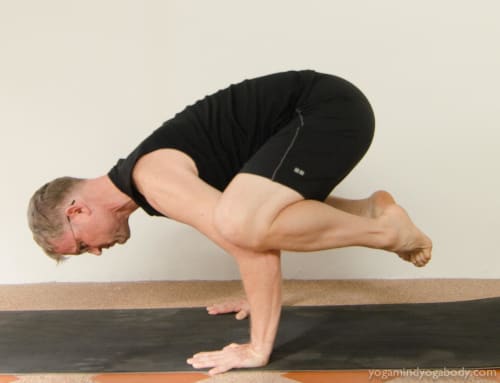This week we will continue with inversions, focusing on headstand.
The great advantage of headstand over other inversions is that it requires less muscular effort and less precise balance. Thus it can be practiced for significantly longer time periods. This in turn increases the benefits you derive from going upside down. Headstand is also generally easier to do without a wall, though most people who practice it in the middle of the room aren’t actually balancing (more on that in class).
However, I usually teach it later, as I believe that the potential for neck injuries is greater in headstand. The main reason is that the neck is weight-bearing here. That means slight misalignments of the head and neck can be problematic. This is especially true if the neck musculature isn’t used to supporting this much weight. However, if you have already learned how to stand on your forearms, you can unweight the head in headstand if your neck ever feels vulnerable.
The need for good alignment and sufficient strength also means that if you want headstand to be part of your practice, it is a good idea to practice it regularly. Lastly, to protect your neck it is important to come out of the pose slowly but immediately if your neck ever feels weak, vulnerable, or unstable. It should go without saying, but if you ever experience neck pain here, come out slowly but immediately and stop practicing the pose and consult an expert.
Contraindications
In addition to the counter indications related to high blood pressure that apply to all inversions, there are several more for headstand, all related to the neck. An old neck injury, like whiplash from a car accident, may mean that headstand is not a good idea. Weak neck muscles and/or high body weight may also be a reason to avoid this pose.
I also advise against headstand if you have strong hyperkyphosis/head forward position. This is essentially a misalignment of the neck and thoracic spine that reduces the amount of weight the neck can safely bear.
Click here to read last week’s general post on inversions.






Leave A Comment